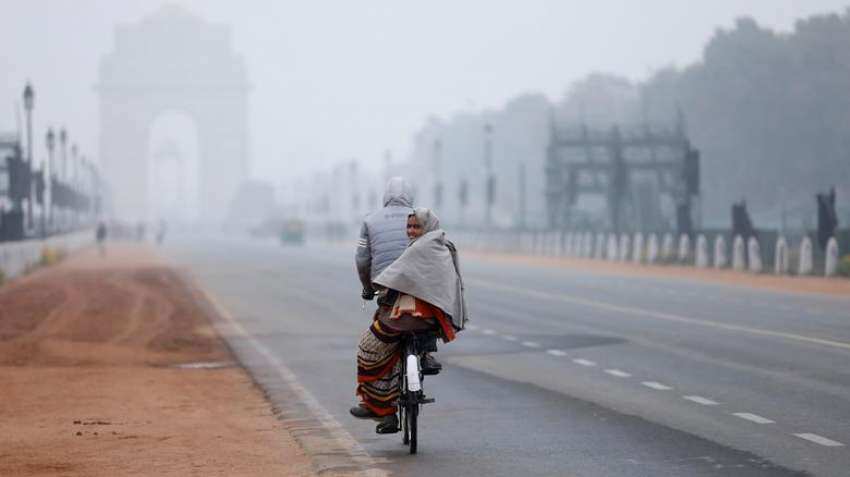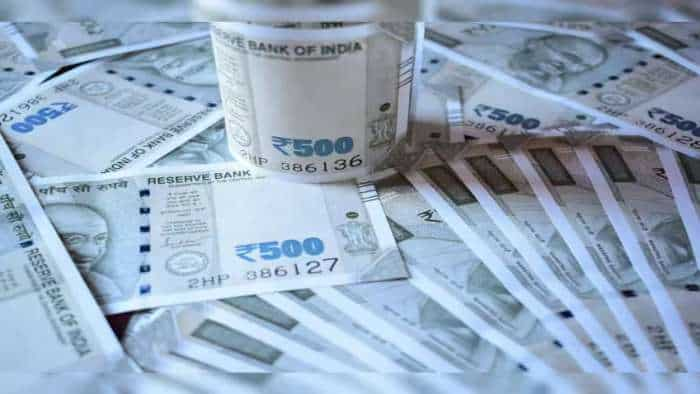Weather Update: Delhi NCR region in grip of severe cold wave; temperature drops below 2 degrees Celsius
A severe cold wave had brought the minimum temperature down to a numbing 1.5 degrees Celsius at the Ridge weather station in central Delhi.

A severe cold wave walloped Delhi along with other north western and central parts of the country on Sunday. The national capital region's temperature drops below 1.9 degrees Celsius, the lowest in January in two years.
Affecting road, rail, and air traffic movement, a layer of dense fog enveloped northwest India and the adjoining central and eastern parts of the country.
Very dense fog lowered visibility to 50 metres at the Palam observatory, near the Indira Gandhi International (IGI) airport, at 5:30 am.
The Delhi International Airport Limited tweeted that flights, which are not CAT III compliant, may get affected.
Passengers have been advised to contact the airline concerned for updated flight information.
A Northern Railway spokesperson said 42 trains were delayed by one hour to five hours due to the foggy conditions.
According to the weather office, very dense fog is when visibility is between 0 and 50 metres, between 51 and 200 metres is dense, between 201 and 500 metres moderate, and between 501 and 1,000 metres shallow.
With frosty winds from the snow-clad mountains pounding northwest India, including Delhi, the weather stations at Lodhi Road, Ayanagar, Ridge and Jafarpur logged a minimum temperature of 2.8 degrees Celsius, 2.6 degrees Celsius, 2.2 degrees Celsius and 2.8 degrees Celsius, respectively.
On Saturday, the Safdarjung observatory had logged a minimum temperature of 2.2 degrees Celsius -- lower than that of most places in Himachal Pradesh and Uttarakhand and some hill stations in Jammu and Kashmir.
A severe cold wave had brought the minimum temperature down to a numbing 1.5 degrees Celsius at the Ridge weather station in central Delhi.
Several places in the capital had recorded the maximum temperature at least seven notches below normal, making it a severe cold day.
The cold snap is straining power grids and posing challenges to the homeless and animals. Delhi's peak winter power demand rose to a record 5,526 MW on Friday.
The IMD warned of an impact on agriculture, livestock, water supply, transport and the power sector at some places.
The weather office also said frostbite can occur due to a prolonged exposure to cold and that one should not ignore shivering -- the first sign that the body is losing heat -- and should stay indoors.
"Eat vitamin C-rich fruits and vegetables and drink sufficient warm fluids to maintain adequate immunity. Avoid or limit outdoor activities," it said in an advisory.
The Met office had issued an "orange" alert for certain parts of north India, including Delhi, for Sunday, warning that dense fog, cold day and cold wave conditions will persist.
"Cold wave to severe cold wave conditions are very likely to continue over some areas in Rajasthan and Haryana, Chandigarh and Delhi on January 8," it said.
However, slight relief is likely after a couple of days under the influence of back-to-back western disturbances, the IMD said.
In the plains, the Met office declares a cold wave if the minimum temperature dips to 4 degrees Celsius or when it is 10 degrees Celsius and 4.5 notches below normal.
A severe cold wave is when the minimum temperature dips to 2 degrees Celsius or the departure from the normal limits is by more than 6.4 notches.
A cold day is when the minimum temperature is less than or equal to 10 degrees Celsius and the maximum temperature is at least 4.5 notches below normal.
A severe cold day is when the maximum temperature is at least 6.5 notches below normal.
Get Latest Business News, Stock Market Updates and Videos; Check your tax outgo through Income Tax Calculator and save money through our Personal Finance coverage. Check Business Breaking News Live on Zee Business Twitter and Facebook. Subscribe on YouTube.
RECOMMENDED STORIES

Top 7 Small Cap Mutual Funds With Best SIP Returns in 10 Years: Rs 11,111 monthly SIP investment in No 1 fund has sprung to Rs 57,30,613; know about others too

Top 7 mid cap mutual funds with highest SIP returns in 3 years: Rs 22,222 monthly SIP investment in No 1 fund has converted into Rs 15,07,277

SBI 444-day FD vs Bank of Baroda 400-day FD: What will be maturity amounts on Rs 6 lakh and Rs 10 lakh investments for general and senior citizens?
11:29 AM IST









 Cold wave grips Delhi: Flights, trains delayed as dense fog blankets national capital
Cold wave grips Delhi: Flights, trains delayed as dense fog blankets national capital UP: Lucknow District Magistrate declares winter break; schools closed till January 18
UP: Lucknow District Magistrate declares winter break; schools closed till January 18 Amid some respite from biting chill, cold wave conditions continue in Kashmir
Amid some respite from biting chill, cold wave conditions continue in Kashmir  Lucknow schools closed till January 10 due to cold wave
Lucknow schools closed till January 10 due to cold wave Delhi-NCR shivers in biting cold as temperature dips further, AQI remains 'very poor'
Delhi-NCR shivers in biting cold as temperature dips further, AQI remains 'very poor'